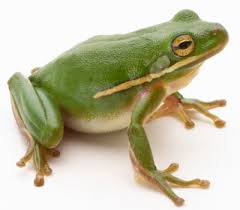Souvenir Sheet: Living in the flood plain (Netherlands- Personalized stamps 2021)
Living in the flood plain (Netherlands- Personalized stamps 2021)
16 November (Netherlands- Personalized stamps ) within release Dutch underwater world goes into circulation Souvenir Sheet Living in the flood plain face value 5*1 No Face Value
| Souvenir Sheet Living in the flood plain in catalogues | |
|---|---|
| Colnect codes: | Col: NL 2021-232 |
Souvenir Sheet is square format.
Also in the issue Dutch underwater world:
- Stamp - Burbot face value 1;
- Souvenir Sheet - Fishing in the North Sea face value 5*1;
- Stamp - Garlic toad face value 1;
- Souvenir Sheet - Invertebrates in the North Sea face value 5*1;
- Stamp - Invertebrates in the North Sea face value 1;
- Stamp - Invertebrates in the North Sea face value 1;
- Stamp - Invertebrates in the North Sea face value 1;
- Souvenir Sheet - Living in the flood plain face value 5*1;
- Stamp - Pouting face value 1;
- Stamp - Striped red mullet face value 1;
- Stamp - Water gentian face value 1;
- Stamp - Wolffish face value 1;
Souvenir Sheet Living in the flood plain it reflects the thematic directions:
Animals are multicellular, eukaryotic organisms of the kingdom Animalia (also called Metazoa). All animals are motile, meaning they can move spontaneously and independently, at some point in their lives. Their body plan eventually becomes fixed as they develop, although some undergo a process of metamorphosis later on in their lives. All animals are heterotrophs: they must ingest other organisms or their products for sustenance.
A flower, sometimes known as a bloom or blossom, is the reproductive structure found in plants that are floral (plants of the division Magnoliophyta, also called angiosperms). The biological function of a flower is to effect reproduction, usually by providing a mechanism for the union of sperm with eggs. Flowers may facilitate outcrossing (fusion of sperm and eggs from different individuals in a population) or allow selfing (fusion of sperm and egg from the same flower). Some flowers produce diaspores without fertilization (parthenocarpy). Flowers contain sporangia and are the site where gametophytes develop. Many flowers have evolved to be attractive to animals, so as to cause them to be vectors for the transfer of pollen. After fertilization, the ovary of the flower develops into fruit containing seeds. In addition to facilitating the reproduction of flowering plants, flowers have long been admired and used by humans to beautify their environment, and also as objects of romance, ritual, religion, medicine and as a source of food.
A frog is any member of a diverse and largely carnivorous group of short-bodied, tailless amphibians composing the order Anura[(coming from the Ancient Greek ἀνούρα, literally 'without tail'). The oldest fossil "proto-frog" Triadobatrachus is known from the Early Triassic of Madagascar (250 million years ago), but molecular clock dating suggests their split from other amphibians may extend further back to the Permian, 265 million years ago. Frogs are widely distributed, ranging from the tropics to subarctic regions, but the greatest concentration of species diversity is in tropical rainforest. Frogs account for around 88% of extant amphibian species. They are also one of the five most diverse vertebrate orders. Warty frog species tend to be called toads, but the distinction between frogs and toads is informal, not from taxonomy or evolutionary history.
Flora is the plant life occurring in a particular region or time, generally the naturally occurring or indigenous—native plant life. The corresponding term for animal life is fauna. Flora, fauna and other forms of life such as fungi are collectively referred to as biota. Sometimes bacteria and fungi are also referred to as flora, as in the terms gut flora or skin flora.




